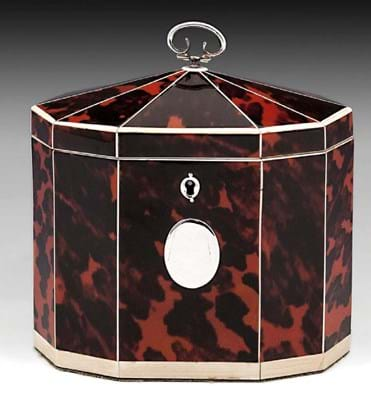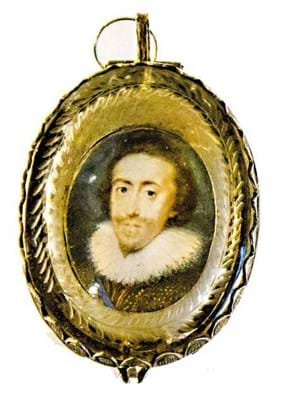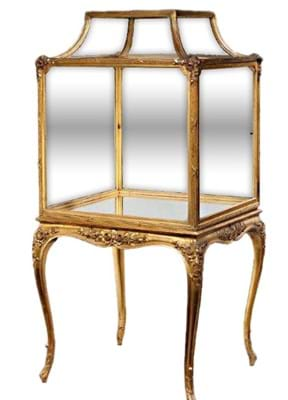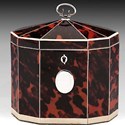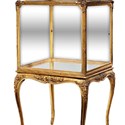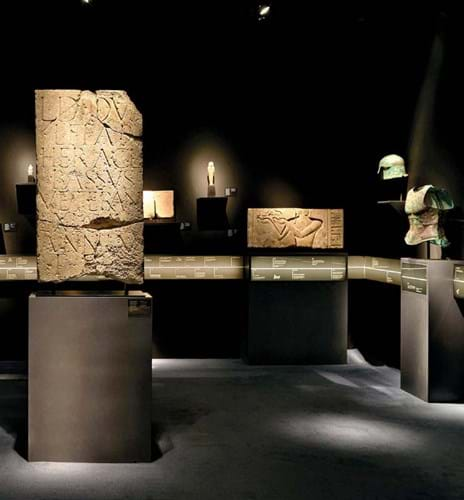The two found they had a shared enthusiasm for yachting and the client bought a clock off the stand.
Then he visited the Wick Antiques website and bought 10 more pieces.
Wallrock went on to sell a total of 29 pieces at various levels throughout the fair including furniture, Japanese objects and marine artefacts, but it was the steady stream rather than the big-ticket prizes that left him calling it “the best LAPADA fair yet”.
At some fairs, a single sale can make up the price of the stand. But when a fair is a marathon rather than a sprint, the results can be just as rewarding. That was the case for many dealers this year who reported high volumes of sales throughout the early autumn event.
Purpose-built marquee
Mieka Sywak helms the annual event, which hosts 114 dealers in a purpose-built marquee in London’s Berkeley Square. She devotes herself to ensuring the dealers’ comfort within the tent and to coaxing in as many potential clients from the surrounding area as possible – whether tourists, local hedge-fund managers and London residents, or seasoned collectors or art and antiques fair novices.
Around 20,000 visited the fair this year, many of whom were prepared to buy, if not always at the highest level.
Silver specialist I Franks, for example, experienced steady success throughout, reporting 40 sales by the end. Most were invoiced to international buyers.
Ted Few, dealer in ‘idiosyncratic’ works of European art, similarly reported more sales at the fair than ever before.
Meanwhile, Mark Goodger of Hampton Antiques met a client who asked to have four Lalique car mascots held for him. After the fair, the client, also a collector of vintage cars, purchased all four pieces, which ranged in price from £2500 to an Opalescent Vitesse at £26,000.
Costas Paraskevaides of ArtAncient said: “The fair had a buzzy atmosphere because its location and size are just right. Even people who weren’t buying from us were excited to come up and discuss our stand.” The gallery was among those that took the opportunity to stage a special display.

ArtAncient sold this Roman bronze fragment of a horse’s leg, from a life-size statue, c.2nd century AD, which was offered for a price in the region of £84,000.
Indeed, many use the event as a sort of high-level marketing event. Farnham Antique Carpets, for instance, offers rugs and carpets of such scale that the firm usually makes sales after visiting a client’s house to demonstrate the piece in situ. At the recent fair, however, the gallery’s Stephen Marsh reported that a client had walked up early on and purchased a smaller piece to carry home with them that day.
No fair results in universal happiness. Geography presented a challenge for some exhibitors, with those furthest from the entrance experiencing slightly fewer visitors than those nearer the front. And events in the wider industry, including the continuing uncertainty over ivory regulation, was felt for some dealers as well.
The event was marked by new dates this year, running from a Friday to following Wednesday and spanning both sides of a weekend for the first time. New too was principal sponsor Killik & Co, which invited all its clients and held a private party at the opening night. Well-known visitors included Topshop CEO Paul Price, photographer Mario Testino and comedian Alan Carr.
Among those commenting on the visitor profile at this year’s event was Beaux Arts, which noted younger buyers, and Whitford Fine Art, whose Gabriel Toso reported he was pleased to see the return of many American visitors.
“This year’s fair was a real benchmark,” said Sywak. “We have set ourselves quite the challenge for our 10th anniversary in Berkeley Square in 2018.”
The 4.6bn-year timeline
“As exhibitors, if you give a lot you’ll get a lot back, not just monetarily,” says Costas Paraskevaides of ArtAncient.
The London gallery was one of the most ambitious at the LAPADA fair, staging a show several years in the making. The gallery gathered 35 objects to chronicle 4.6bn years of history displayed on a timeline that wrapped around the stand.
The earliest pieces included iron meteorites, trace fossils and giant Megalodon teeth. It continued to early stone tools, a Neolithic idol and early coins, ending with artefacts from the Roman conquest of Britain.
It was staged to engage visitors, who were encouraged to start on the left side of the stand and follow the timeline chronologically to the latest period at the right. Though getting the pieces together for the show was a long process, ultimately Paraskevaides felt the effort paid off.
“Obviously this was an expensive exercise but we pre-sold nearly half our offerings to a single collector,” Paraskevaides added. “By the end of the fair we were left with only around a quarter of the stand unsold.”



